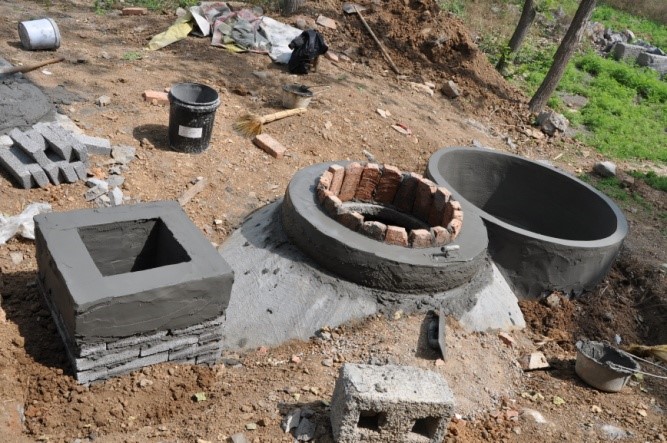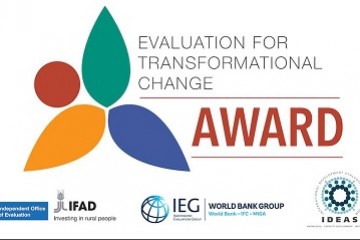Climate-relevant technology will play an important role in reaching the long-term climate objectives agreed in the Paris Agreement. The availability of appropriate technologies, and corresponding capabilities, can be limiting factors in developing countries. Therefore, the transfer of such technologies to developing countries, together with access to financing to facilitate this, is considered a crucial element of the UN Climate Convention. In practice, successful, and long-term sustainable, technology transfer can be hampered by a host of challenges. Here we will look at a number of best practice cases of climate technology transfer, in order to draw lessons learned and identify success factors for future efforts. Important keywords in that respect are long-term, tailor-made efforts, meaningful involvement of local stakeholders, dedicated matchmaking and reflection of entrepreneurial perspectives and business cycle aspects.
Technology transfer to support long-term climate objectives
Climate-relevant technology will play an important role in reaching the long-term climate objectives agreed in the Paris Agreement as part of the UN Climate Convention, both in terms of mitigation and adaptation. The deep cuts in global emissions required to limit average global temperature increase to less than 2 degree will need substantial upscaling of the development and implementation of low-carbon technologies in energy supply, manufacturing, transport, construction, etc. Smart agriculture, infrastructure planning, water management and urban development, amongst others, are important tools in managing the impacts of climate change and limiting damage.
While strong differences exist in capabilities among developing countries, many do not have sufficient access to climate-relevant technologies or capabilities to rapidly scale up their implementation and facilitate low-carbon and climate-resilient development. Therefore, technology transfer to developing countries, together with access to finance to support it, has been an important element of the UN Climate Convention, since its adoption in 1992, to support developing countries to meet their commitments under the Convention (Art. 4.3). This is further operationalised in the UNFCCC Technology Mechanism established in 2010 with the aim to facilitate the transfer of climate-relevant technology from its developed parties to developing country parties. The 2015 Paris Agreement cements the Technology Mechanism as the Convention’s technology transfer vehicle post-2020.

In the context of climate change¹ , the definition of “technology transfer” is based on the 2000 IPCC Special Report on the issue² as comprising “a broad set of processes covering the flows of know-how, experience and equipment for mitigating and adapting to climate change amongst different stakeholders such as governments, private sector entities, financial institutions, NGOs and research/education institutions. It comprises the process of learning to understand, utilize, and replicate the technology, including the capacity to choose it, adapt it to local conditions, and integrate it with indigenous technologies”.
Challenges for successful technology transfer
In spite of the long-time recognition of the importance of technology transfer for climate change, the realisation of its large-scale potential has been hampered by a variety of political, financial, technical and legal challenges:
- In general, there is insufficient access to capital for investors in developing countries. In addition, the costs of climate technologies and the associated risks are often higher than default technology alternatives and usually need more capital.
- Technologies are usually owned by companies, not by countries. Governments are therefore often not in the position to transfer technologies to other countries without cooperation of companies and/or substantial financial resources.
- Developed countries and technology companies usually focus on approaches using simple technology sales rather than involving local industries in the process of adding value to the chain. The latter requires more efforts, more complex processes as well as more local knowledge and networks, and carries a higher liability regarding proprietary technologies.
- In relation to that, there can be a (perceived) lack of rigorous intellectual property rights regulation in the host country, which can make private companies reluctant to share their technology with host country partners.
- On the other hand, developing countries may also lack sufficient institutional and administrative capabilities for negotiating technology transfer contracts that protect the rights of the recipient country.
- Potential host countries may also have imposed barriers, such as trade restrictions for imports of “foreign” technologies, for example genetically modified organisms in various countries, or non-ferrous metals processing in China.
- Wrong project and technology choices can be made in developing countries, e.g. because of the interests of local stakeholder groups. Priorities in developing countries often revolve around large infrastructure projects that are expected to deliver rapid and large-scale impact on economic development. This makes it more difficult to deploy new, sometimes decentralised clean technology and generate the know-how needed to assimilate them.
- In case technologies are transferred, they may not be sustainably implemented because of a focus on hardware only, ignoring the ‘softer’ elements of technology transfer, such as know-how and experience and the capabilities referred to in the definition above to “understand, utilize, and replicate the technology” and to “choose it, adapt it to local conditions, and integrate it with indigenous technologies”. As the result, projects may break down and/or not get rolled out across the country.
Some technology transfer best practice cases
An extensive analysis of the technology transfer landscape, carried out in a project for the European Commission, has led us to the identification of initiatives implementing best practices in one or more of the following categories:
- Involving the private sector, establishing business models;
- Improving access to finance;
- Co-operating in knowledge sharing and capacity building;
- Developing knowledge and intellectual property;
- Promoting technology cost reduction and market deployment;
- Maximising beneficial social impacts and public acceptance.
Aspects related to private sector involvement, improving access to finance and reducing technology costs are often linked in the same best practice. Some of the identified initiatives and best practices are described below.
1. African Biogas Partnership Programme (ABPP)
ABPP partners with local banks and micro-finance institutions to incentivise the provision of loans to smallholder farmers and households that want to procure a bio-digester via dairy farmer co-operatives and savings & credit co-operatives. The technology transfer recipients are the local manufacturers and installers, who benefit from the services of the Netherlands Development Organisation SNV, as well as final users of the plants, who will be trained to properly run and maintain the appliances. The initiative works in Burkina Faso, Ethiopia, Kenya, Tanzania and Uganda offering a cash incentive to partnering financial institutions for every successful loan extended
 ABPP also foregrounds the role of women, engaging and training them in how to build and manage bio-digesters to become owners of bio-digester construction companies. This specific aspect has been crucial in maximising beneficial impacts and public acceptance during programme roll-out.
ABPP also foregrounds the role of women, engaging and training them in how to build and manage bio-digesters to become owners of bio-digester construction companies. This specific aspect has been crucial in maximising beneficial impacts and public acceptance during programme roll-out.
2. Climate Technology Initiative’s Private Financing Advisory Network (CTI PFAN)
CTI PFAN promotes the alliance with private sector investors connecting them with clean energy businesses through fora. Projects for the Fora are selected via calls for proposals. CTI PFAN identifies promising clean energy projects at an early stage and provides mentoring for the development of a business plan, investment pitch and growth strategy. It strengthens the capacity of the project developers to present their projects in a way that investors and financiers can readily understand the proposition, thereby bridging the gap between investors and clean energy entrepreneurs and project developers.
3. Climate Development Knowledge Network (CDKN)
CDKN has developed a franchise business model to encourage entrepreneurs in rural India who operate diesel generators to switch to operating mini-grids. The franchisee pays the initial set up fee and annual loan repayments, and has the option to purchase the mini-grid after five years. The franchising-based business model has proved its success in engaging local entrepreneurs involved in energy production. The best practice contributed to fostering access to clean and reliable energy for rural communities (including the households and micro-enterprises within them), building capacity through training personnel for operating and managing the mini-grid power plants.
4. Global Energy Efficiency and Renewable Energy Fund (GEEREF) and the Evolution One Fund
GEEREF is a public-private partnership structured as a fund of funds, providing financing to SMEs. GEEREF focuses on green field renewable energy projects and infrastructure, using Western technologies in emerging markets, supported by local renewable energy legislation and commercial market drivers. Its ‘Evolution One’ Fund provides private equity financing to small and medium-sized project developers and SMEs located in the Southern African Development Community (SADC). Evolution One’s approach is to use public money as a buffer to protect the private investors and give them a cushion against risk. This approach encourages other investors to partner small and medium-sized project developers and SMEs in projects that otherwise would be considered too risky for them. The Fund also adds value by developing and building the structure of local companies (e.g. ‘added-value function’ by consultancy and technical support for investee companies) to adopt best-practice governance.
5. Renewable Energy & Adapting to Climate Technologies (REACT)
REACT’s specific objective is to improve the way agribusiness and other market systems work. REACT focuses exclusively on the private sector from both developing and developed countries. Private sector companies are invited to compete for co-funding by submitting their new and innovative business ideas, provided the business idea is implemented in Africa. REACT dedicates sustained time and effort to match donor and recipient organisations on the basis of their competencies and knowledge. REACT’s Fund manager reviews the draft business plan, conducts a site visit, performs an organisational assessment, and determines the potential effectiveness.
6. Climate Technology Program (CTP) and its Climate Innovation Centers (CICs)
The World Bank CTP established the Climate Innovation Centres (CICs) as a global network of national entrepreneur and new venture support facilities that are tailor-made to respond to a country’s climate-relevant development challenges. The Kenya CIC (KCIC) offers an enabling ecosystem for the start-ups that it supports, a platform for technology transfer and joint collaborative R&D, as well as international networking activities. The key success factors of KCIC are its bottom-up stakeholder process to establish technology priorities and the holistic approach to upscale business and overcome barriers in Kenya. This approach is reflected in KCIC’s tailored offer of grant financing, business advisory and training services, mentorship, networking, seminars, and other services that build professional expertise of local entrepreneurs and enterprises.
Lessons learned: Success factors for climate technology transfer
Lessons can be drawn in terms of key factors for successful transfer of climate-relevant technology transfer. Such lessons can provide a useful basis for strengthening future efforts in the context of the Paris Agreement and elsewhere.
 In general, it can be concluded that best practices in climate technology transfer include both more technology-specific and more technology-neutral approaches. In other words, success of the technology transfer initiative does not depend on whether a specific technology is selected for transfer or not, but on other elements of the transfer approach. In addition, IPR is not identified as a major issue in the best practices.
In general, it can be concluded that best practices in climate technology transfer include both more technology-specific and more technology-neutral approaches. In other words, success of the technology transfer initiative does not depend on whether a specific technology is selected for transfer or not, but on other elements of the transfer approach. In addition, IPR is not identified as a major issue in the best practices.
The lessons learned from best practice in technology transfer leads to the identification of the following key success factors in terms of long-term, tailor-made efforts, meaningful involvement of local stakeholders, dedicated matchmaking and the reflection of entrepreneurial perspectives and business cycle aspects:
- Technology transfer is most successful in terms of sustained uptake and roll-out of climate-relevant technology as a part of long-term, joint efforts by developed and developing country stakeholders, with all parties having a real stake in the endeavour (i.e. rather than for example simple sales models or standard donor-recipient relations);
- This requires tailor-made activities to fit the recipient country’s circumstances and a dedicated matching of the capabilities, needs and interests of the various stakeholders involved, both on the technology supplier’s side and on the recipients’ side (technology users, but also other parties involved, e.g. financiers, local government);
- Such matchmaking requires extensive bottom up stakeholder processes, with the aim to achieve a buy-in of technological priorities for transfer activities;
- While access to capital can be an important barrier for technology transfer, addressing only the available amount of financing is insufficient. A more holistic approach is needed, addressing different barriers along the entire business cycle. This will also result in scaling up technology transfer by involving also actors that are hampered by challenges in different stages than the initial access to capital.;
- This will require bridging the gap between financiers and entrepreneurs that currently exists and that limits the willingness of financiers to support investments that involve the transfer of climate-relevant technology. This can e.g. refer to the different ‘language’ spoken among financiers and project developers, how they view risks and liabilities, the type of support offered to address challenges, the way economic gains for different stakeholders are set, etc.;
- The involvement of local finance actors in technology transfer initiatives can help the ‘sustainability’ of the initiatives over time, after international funders may end their involvement, as well as increase the potential for local roll-out of the initiative.
This newsletter is based on recent work conducted by SQ Consult; more information on these studies is available at request. The author thanks his colleague Sergio Ugarte for his valuable contribution to writing this article.
¹ Here, it should be noted that also in other international fora, technology transfer is discussed and facilitated, for example in the context of the United Nations Sustainable Development Goals (the Technology Facilitation Mechanism), the Technology Bank under the Istanbul Programme of Action for the Least Developed Countries and the WTO Expert Group on Trade and Transfer of Technology.
² http://www.ipcc.ch/ipccreports/sres/tectran/index.php?idp=0




